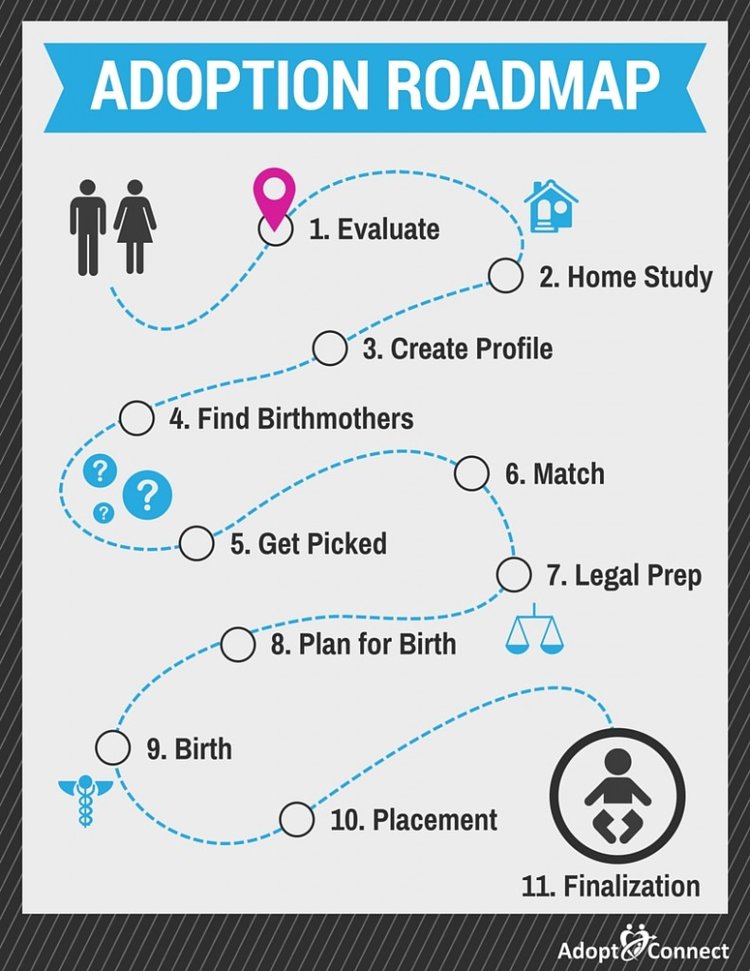
04.13.2021
There are some questions you are probably asking yourself…
You already know the answer to that question.
Of course the answer is “YES!”
Figuring that out was the easy part.
That’s the million dollar question.
You probably also have a broad idea of the answer:
You need to find a woman who wants to place her baby for adoption.
You need to find someone that can facilitate the legal process of adopting.
Then some stuff happens….
Congratulations, you’ve adopted a beautiful newborn baby!
Okay, maybe you know more about the process than that (hopefully not less!), but that’s the outline that a lot of people hoping to adopt have in their minds.
And it’s more-or-less accurate. (Especially the “stuff happens” part!)
The thing is that each of those steps has its own steps…
…and those steps have steps, too….
Before long our basic sketch has become exponentially more complicated.
And if you are a normal human being, your head starts to spin a little.
Let’s stop the head-spinning mess and lay out a detailed outline for adopting that works:
I’ve broken up the process into 11 steps:
Evaluate your situation.
Complete a home study.
Create a family profile.
Find birthmothers.
Get picked by a birthmother.
Match with that birthmother.
Begin the legal process.
Support the birthmother and plan for the birth.
Birth.
Baby is placed with you pending adoption.
The adoption is finalized.
Most of these are linear steps (that is, you have to complete one step BEFORE you can move on to the next).
A couple can be tackled at the same time, though: You can start working on your family profile during your home study and the legal preparations will happen at the same time as your planning for birth.
So that’s the outline. (Easy right?)
Here’s the detail:
This is critical.
Before you do anything else you need to ask yourself if you are really ready to take this on.
I don’t want to scare anyone away from adopting, but it’s important to know the risks.
About 25% of all adoption plans fall through.
Let that sink in a bit….
When you match with a birthmother and are preparing to adopt her child, there’s about 1 in 4 chance that that adoption won’t be completed.
Disruptions happen at different stages in the process:
Sometimes it’s shortly after getting matched.
Sometimes it’s after several months of planning and anticipation.
Sometimes it’s after the baby has been placed with the adoptive parents but before finalization. (This last case is super rare, thankfully.)
The reasons for disruptions are varied:
The birthmother decided to parent or that she wanted a different family.
The birthfather or someone else in the birth family interveined.
The birthmother was scamming (i.e., she wasn’t actually pregnant or was pregnant but didn’t intend to place).
The adoptive family decided not to move forward with the situation. (This is also pretty rare, but does happen from time-to-time.)

Disruptions are emotionally devastating, especially because on top of the pain of losing a child (which really is how it feels) there are often a lot of lies and betrayal involved.
A lot of disruptions happen because of scamming.
Scamming is a big problem in the adoption world, so I’ll treat it separately a little later on. In brief, though, scamming is where someone lies about their intent to place a child for adoption for the sake of personal gain.
Scammers are usually after the special assistance with medical and living expenses adoptive families often offer to birthmothers. (And while that kind of fraud is illegal, it is practically impossible to prosecute.)
End result?
Well-meaning adoptive families sometimes lose thousands of dollars and get their hearts broken.
That isn’t usually the case, but it happens enough that everyone should be aware of the risk before starting the adoption process.
There are ways to reduce the risk of being scammed, but first another important question:
Another hard truth right off the bat: private adoption is expensive.
Private domestic adoptions, all said and done, usually cost between $20,000 and $45,000.
That can include expenses like:
Attorney Fees
Agency Fees
Court Fees
Home Study Fees
Advertising Fees
Pregnancy/Living Expenses for the Birthmother
Some of these costs are upfront, some come on matching or placement.
For upfront costs, you typically won’t be able to start the adoption process until they are paid.
If you don’t pay to get a home study, for example, you cannot legally adopt.
Other expenses may need to be paid on short notice, so you’ll need to have the money available to pay.
This is often the case with birthmother expenses. A birthmother might be homeless and need immediate help with housing.
If you are working with an attorney, then they will likely have you put money into a trust account to pay for such things, but you will be expected to promptly replenish that trust when the funds are depleted.
This is all to emphasize the fact that, it’s always best to have a set budget for your adoption, with the money held in a separate account that can be accessed at any time.
You don’t want to be caught between paychecks when a birthmother situation is on the line.
(If you are concerned about cost, we’ve put together a great webinar just for you:)
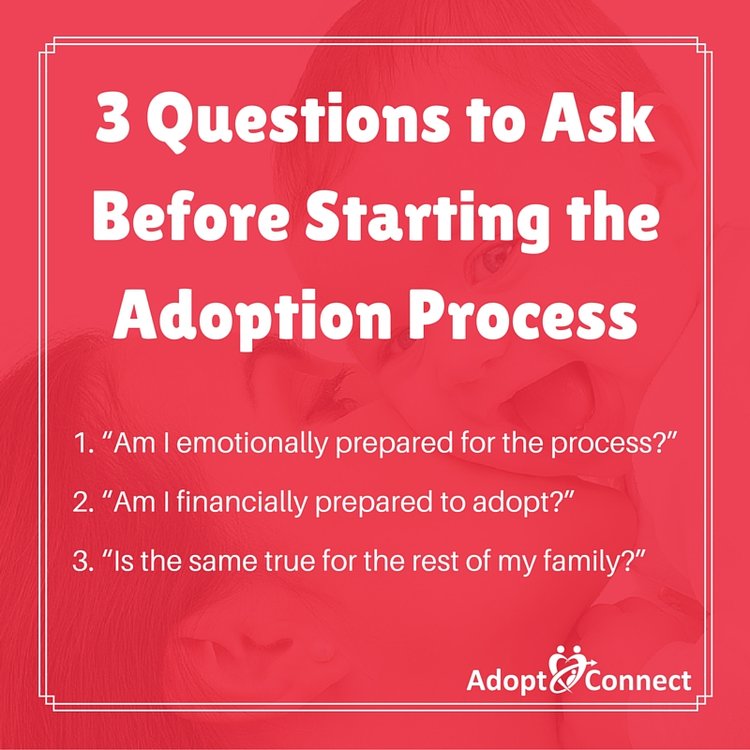
Are you hoping to Adopt?
If you are ready to get started with Adopt Connect click the Apply Now button to fill out an adoptive family application.
“Is the same true for the rest of my family?”
Being confident that you are emotionally and financially prepared to adopt is important, but it can be just as important that the rest of your family is ready, too.
If you are married, then this starts with your spouse.
Sometimes spouses just aren’t on the same page. They may both want to adopt, but one wants to do it today and the other just wants to do it someday.
(We had one couple where the husband said he was on board and excited about adopting but AFTER they were matched with a birthmother revealed that he DIDN’T actually want to adopt. His wife was heartbroken because they were so close to finally having a baby and then had to break the match.)
It’s crucial to speak frankly with your spouse about your adoption plans before you begin the process and to keep the lines of communication.
BOTH of you need to be fully aware of what is going on with your adoption at all times.
If you aren’t, the results could be disastrous.
If you have children, it’s also important to consider their feelings.
Aside from whether or not they would like a new brother or sister, you have to also think about how difficult the adoption process might be on them.
How would they react to a disruption?
Would they be able to handle your traveling to a different state on very short notice when it’s time for baby to be born?
It’s also worth considering how your extended family and friends would feel about you adopting.
Ideally these people will serve as your support system.
Nowadays, most people have positive attitudes toward adoption and are happy to offer their support when someone they know is trying to adopt.
Still, some people are opposed to some kinds of adoption (transracial, for example) or simply aren’t sure what they are supposed to say or do.
While the prejudice or ignorance of others shouldn’t necessarily keep you from adopting, it’s good to recognize where it may become a problem so you can be prepared to address it should the situation arise.
With all that soul-searching out of the way, it’s time to get started.
Once you are confident that adoption is right for you and your family, the first thing you need to do before you are legally able to adopt is complete a home study.
A home study is an examination of your physical home as well as your family. It is usually conducted by a social worker, though some states allow other certified individuals or organizations to conduct them.
While the exact requirements vary from state to state, the home study process typically involves:
paperwork
interviews
an inspection of your home.
The paperwork will include documents looking at your finances to make sure you can afford to adopt a child as well as forms to run background checks.
The people interviewed typically include you and your spouse (both together and separately), other adults in your household, and any school age children in the home. Questions will mostly focus on topics relevant to parenting and family life.
They might also ask for some references from friends, family
Usually, the social worker doing your home study will conduct the face-to-face interviews when he or she inspects your home.
The home inspection is probably the part that intimidates people the most. (I know it scares me!) The point of it is to make sure that there is room for a child to safely sleep and play and to make sure the place is reasonably clean and in good-repair.
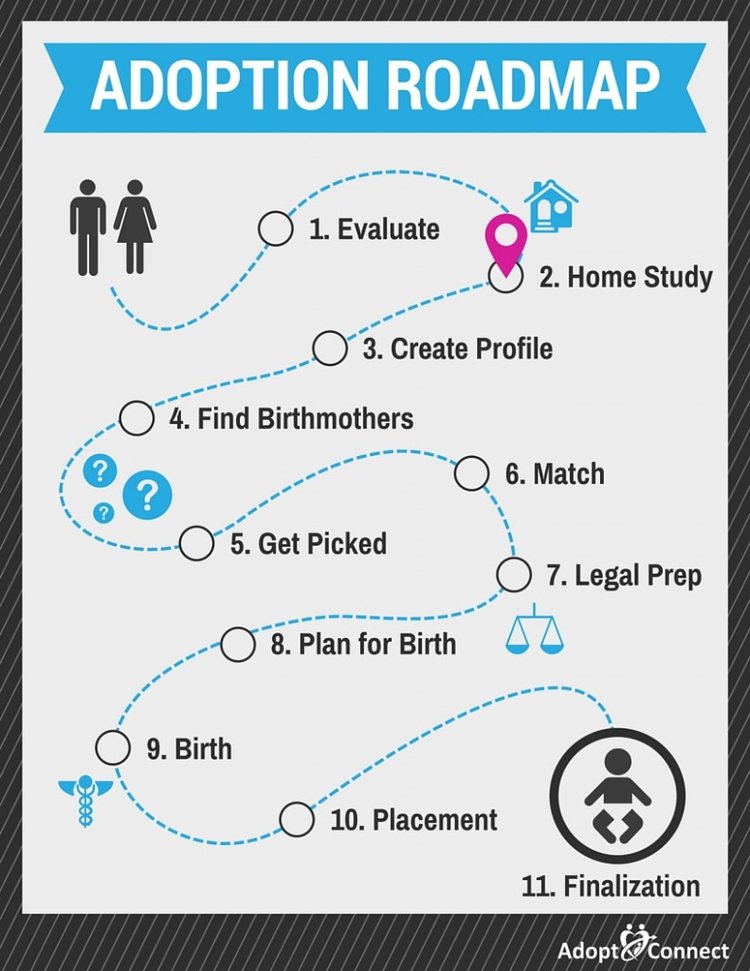
You shouldn’t lose sleep over making sure everything is immaculate. In fact, being too perfect can be a red flag. (Everyone has some dirt somewhere, right?)
The most important thing to do during your home study is be up front and honest.
If you have a criminal record, for example, it’s a lot better to mention that BEFORE the background checks are completed so there are no surprises later on.
We produced a great post about the sorts of things to prepare for in a home study that you can read at What to Expect During A Home Study.
Great family profiles are easy to create.
What surprises me is how RARELY I actually see one.
People go one of two ways: they underthink it or they overthink it.
Usually they over think it.
And it’s easy to understand why:
Your family profile is pretty much your one chance to make a good impression on a birthmother. It’s your only shot at pleading your case.
So there’s a lot riding on that one document!
But it’s that very concern for “getting it right” can get in the way of your actually getting it right.
The drive to make the most of this one shot leads a lot of families (actually most families, in my experience), to cram as much information as possible into their profile.
The problem with that is what should be a 4 page profile balloons to 40 pages.
Birthmothers are usually given at least five family profiles to look at. If one is as long as all the others combined, she is much less likely to give it a serious read.
There are lots more things you can do to improve your adoption family profile booklet. We’ve written about some of them at 9 DIY Tips for Making a Family Profile Booklet and 7 Mistakes In Your Profile Booklet Keeping You From Being Picked.
And remember: We’re always happy to give you advice and assistance on your profile
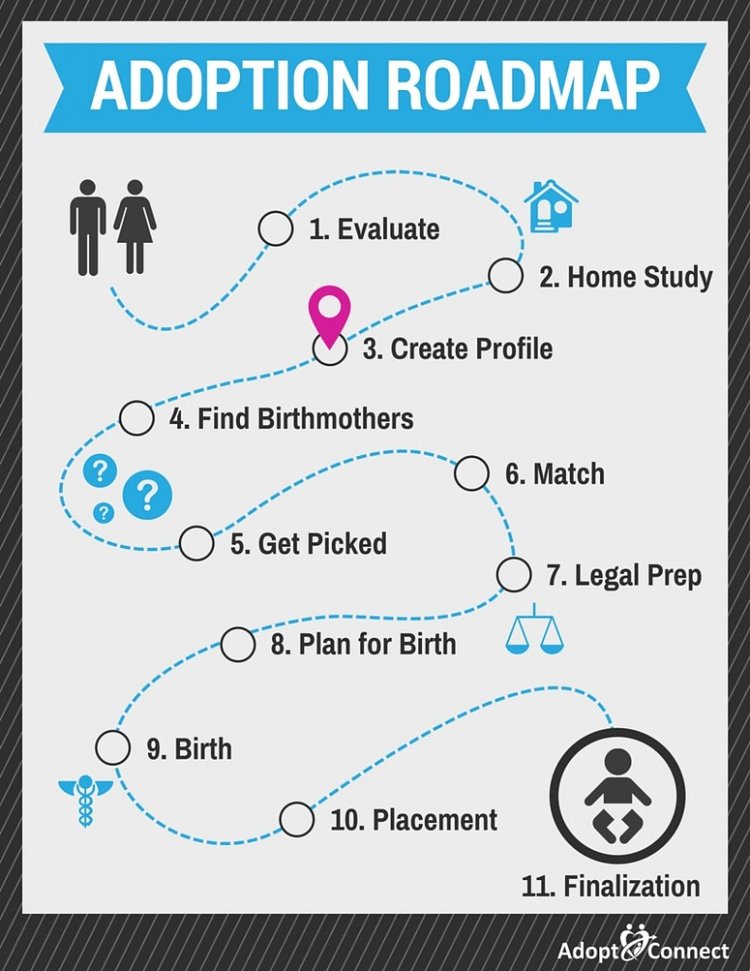
Easier said than done, right?
The fact of the matter is that fewer and fewer women are choosing adoption. Just look:
With improvements in assistance for the poor and the decrease in stigma around single motherhood, many women who would have been inclined to place their baby for adoption are now deciding to parent instead.
That isn’t necessarily a bad thing, but it does pose a problem for those who wish to adopt a newborn.
So, there simply aren’t as many domestic newborns being placed for adoption as there were in years past; less than 14,000 newborns are placed for adoption in the US per year. [cf. http://www.cdc.gov/nchs/data/series/sr_23/sr23_027.pdf, Table 16.]
Further, the ways women who are considering adoption are seeking information are changing.
More and more, the internet is becoming the primary resource for those wanting information about adoption.
The “old-fashioned ways” though (e.g., phonebooks), are still VERY relevant. (Not everyone has a smartphone!)
So, that’s why we make a point of maintaining a presence in both realms: the brick-and-mortar and the digital.
To be blunt, anyone who ignores either and thinks they are effectively making themselves available to potential birthmothers is deluding themselves.
The other big obstacle to finding birthmothers these days is the prevalence of scammers.
Why?
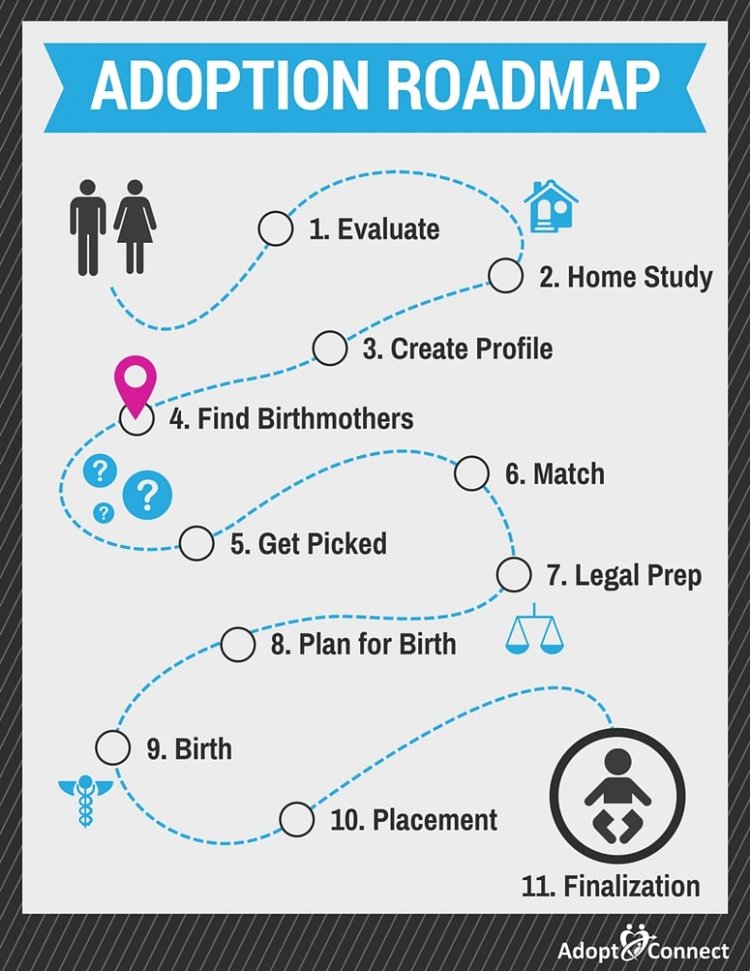
Because when a scammer poses a serious birthmother and says she’s picked you, you stop looking for birthmothers!
Scammers delay their victims’ adoptions by months or even years. Because of the significant emotional and financial loss, some families simply give up on their dreams of adopting.
Another blunt fact: anyone who says they can help you adopt without the danger of scamming is lying.
There is no way to eliminate the risk of being scammed.
All of these facts (fewer newborns are being placed for adoption than before, potential birthmothers are seeking help with adoptions in different ways than before, and the risk of being scammed is much greater than before) taken together lead to a couple of conclusions.
First, the obvious one: the adoption world has changed (and is, in fact, continuing to change).
The ways of connecting with birthmoms that worked yesterday may not work today. And what does work today may not work tomorrow.
They may not even be safe.
Second, those serious about adopting have to be serious about finding a birthmother from whom they can adopt.
If your dream is to adopt a child and you don’t happen to be an expert on the subject, then you should be partnering with people who are experts.
And not just people who say they are experts, but people who actually get results.
There are plenty of agencies, companies, individuals, etc. out there who are happy to take your money in exchange for helping you connect with a birthmother and then never lift a finger for you.
(Getting off my soapbox now….)
Anyway, this is all a long way of saying that finding birthmothers can be hard and you should considering working with someone who knows what they are doing.
(I happen to think we do a pretty good job and we’d love to help you out:)
Are you hoping to Adopt?
If you are ready to get started with Adopt Connect click the Apply Now button to fill out an adoptive family application.
If your profile is getting shown to birthmothers, then congratulations! You are doing better than many who are trying to adopt.
You may have noticed, though, that you still have not yet adopted a child or even matched with a birthmother.
If that sounds like you, there are a couple of things that may be going on:
There may be some issues with your profile that dissuade birthmothers from choosing your profile.
You may not actually be getting shown as often as you think.
Profile issues are relatively easy to fix, but sometimes difficult to detect.
As someone hoping to adopt, you have to especially rely on feedback from your professional partners.
That is one of the many problems of simply posting your profile on a large adoption advertising website: there isn’t a human being who can tell you if there’s anything that could be improved. Your only clue comes when months go by with nothing happening.
No professional service should let typos, a poor choice of words, or just a bad scan of an image be a barrier between someone and their dreams.
Not actually getting shown is a serious problem.
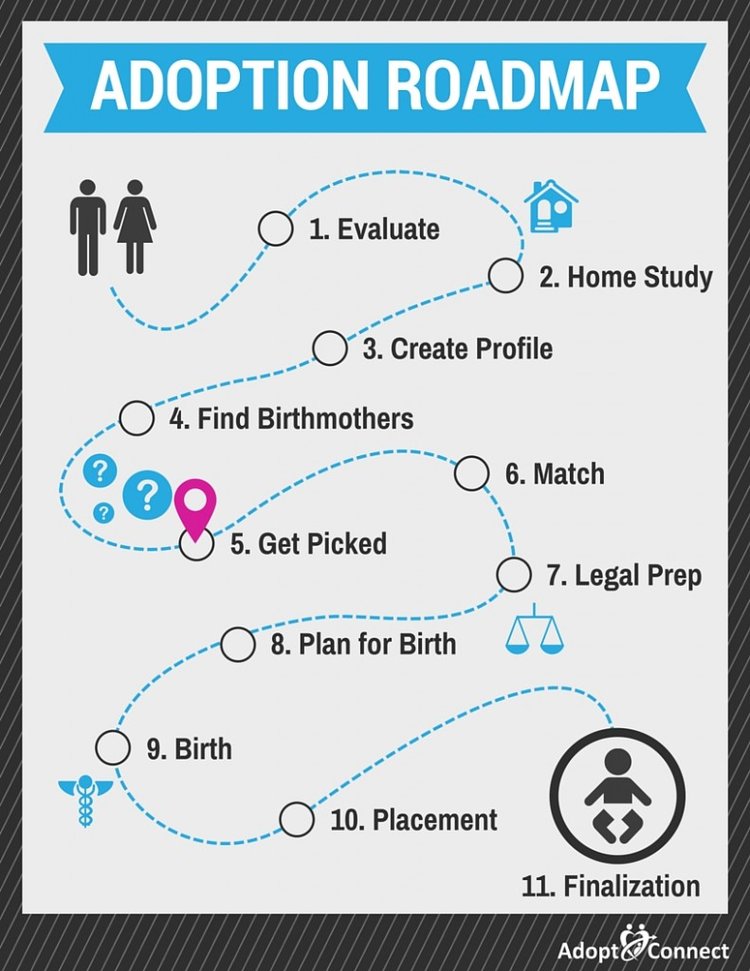
Now before you start getting riled up, this one may actually be your fault (at least, partially).
In my experience, the families who wait the longest to be picked are the ones who have the most restrictive preferences.
“Preferences” isn’t really the right word. It’s more like “requirements.”
Don’t get me wrong: It’s okay to hope for a girl while still being open to a boy, or vice versa.
And if you honestly don’t think that your family would be the right fit for some situations, it’s good to remove yourself from the equation in those situations.
But, with every rigid limitation on the kinds of situations where you want to be shown, you reduce the number of situations available to you, sometimes by a little, sometimes by a lot.
If you are only open to adopting an all-caucasian newborn girl in perfect physical health with no family history of mental illness, you will almost certainly have to wait a very long while before your profile is even shown.
Another difficulty with preferences is, even if you are flexible, your professional partners may not know or respect that.
Many adoption professionals see themselves as “gatekeepers,” controlling which adoptive families are made aware of which birthmother situations.
Here at Adopt Connect, we don’t consider that to be any of our business; we don’t want to be the ones to keep our families from being picked.
We send our families EVERY situation that comes to us and allow each family to decide if they want to be shown to that birthmother.
That way families are in direct control over how limiting their preferences are or are not.
Besides, it’s difficult (if not impossible) to fit human circumstances into neat categories, so there’s always someone—either the family or an adoptive professional—making a judgement call.
Deciding whether or not to be shown on a case by case basis is the ONLY EFFECTIVE WAY for adoptive families to assert their desires.
And that also means that you are fully aware of how often your profile is being shown.
A lot of people confuse being picked with being matched.
Being picked is when a birthmother has simply shown interest in your profile and wants get to know you better.
Being matched follows getting picked; it’s when, after getting to know one another, both parties decide they want to move forward.
The only exception to this would a closed adoption, where the birthmother doesn’t want any contact with or knowledge about the adoptive family. In that case, the adoption coordinator usually selects a family according to the birthmother’s wishes and if the family still wants to move forward, they are considered matched.
A completely closed adoption like that is very, very rare these days, though.
Usually birthmothers want at least some contact with the adoptive family to make sure they are a good fit before the baby is born.
Getting matched, then, relies upon starting a relationship with the birthmother.
Very often this occurs with a conference call between the adoptive family and birthmother and mediated by the adoption coordinator.
Usually everyone is pretty nervous because they desperately want to make a good impression.
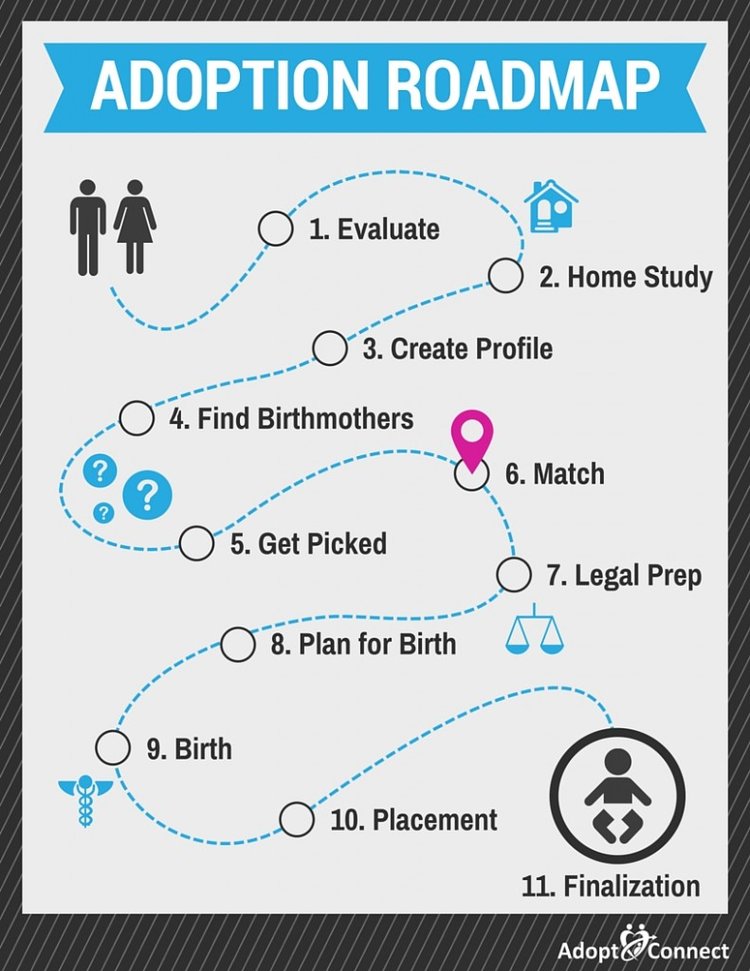
Our coordinators know this so they have ways of helping everyone relax and spur conversation.
After the conference call, one of two things will happen: either both parties will want to move forward or at least one of them will want to go a different direction.
If someone decides not to proceed, the issue won’t be forced: the birthmother will be introduced to another family and the family will go back to having their profile shown to new situations.
If everyone is comfortable with each other, though, that’s when they are “matched.”
Then all the fun begins.
Once a family is matched with a birthmother, legal processes and preparations can begin. These can include things such as:
Payment of qualified birthmother expenses.
Preparation of legal documents for the adoption proceedings.
Birthfather notifications.
(NOTE: Before I go any further, I’d like to make it abundantly clear that I am not a lawyer and this is not legal advice. Adoption laws vary by state—sometimes greatly—and a brief overview, such as this one, CANNOT fully represent the requirements and procedures that any particular case may entail.)
Very often a birthmother will have some expenses that she needs help covering during and just after the pregnancy.
Many states allow adoptive families to provide some financial assistance to birthmothers.
In order to avoid situations where people effectively “buy” a child, there are rules and limitations regarding the amount and kinds of costs that can be covered.
Some states are very strict about what things adoptive families may pay for, limiting them to only immediate pregnancy expenses such as prenatal doctor’s exams. Other states are more permissive, allowing also the payment of some living expenses such as rent and groceries.
It is always best (and sometimes required) that any birthmother expenses are paid through a third party such as an attorney.
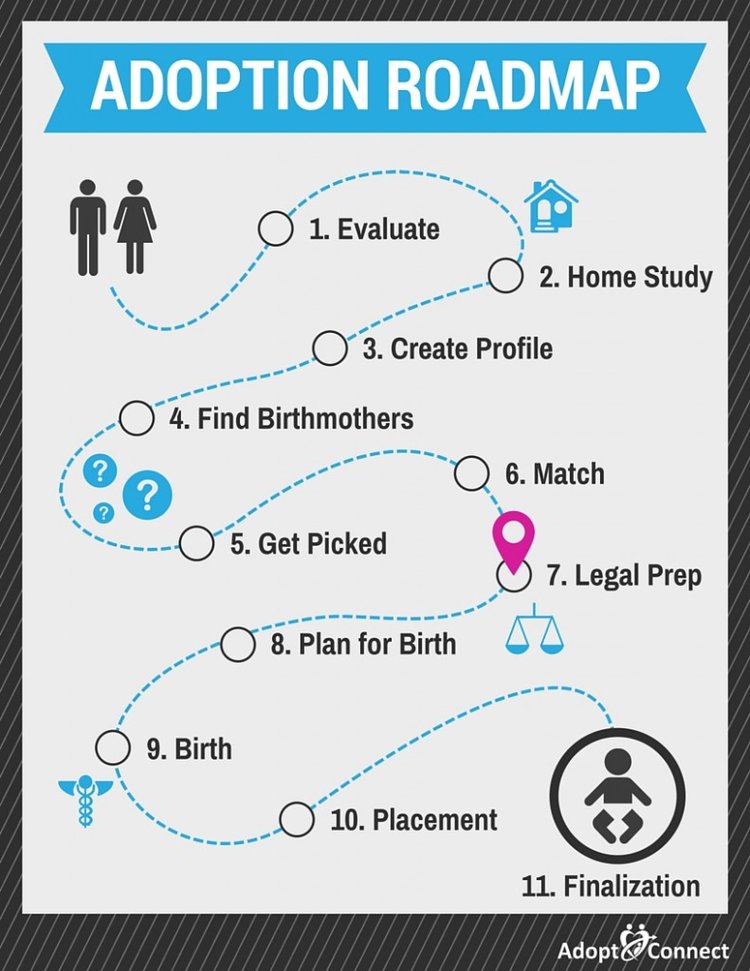
Usually the attorney handling the payment of expenses will keep funds from the adoptive parents in a trust account and pay for things as needed.
There are a couple of reasons why this arrangement is preferable, even if it isn’t legally required.
First, it disassociates the adoptive family from the payment and non-payment of expenses.
If the birthmother requests that something be paid for that is beyond the allowance of the law, the attorney gets to be the bad guy and not the adoptive family. Further, it reduces the likelihood of the family being harassed for money.
Second, it ensures that one experienced entity is reviewing all of expenses covered making it easier to spot any suspicious patterns that might suggest scamming.
A significant amount of documentation is usually required for an adoption, especially for things like the expenses mentioned above.
Also, adoption procedures can quickly get EXPONENTIALLY more complex when multiple states are involved or when the child to be adopted has Native American ancestry.
So lawyers like to get a head start on the various petitions and paperwork that are necessary for a particular adoption once a family is matched with an expectant birthmother.
What this means for you as an adoptive parent is that the attorney(s) involved will likely be collecting a lot of information from you, if they haven’t already.
It’s important to understand, though, that a birthmother cannot relinquish her child for adoption until after she has given birth and that the child cannot be adopted until the birthparents’ parental rights have been terminated by the court.
During this period is also when investigations into the birthfather take place.
If the identity and location of the birthfather is he will be notified of the birthmother’s intent to place the child for adoption.
If there are multiple men who might be the father of the child, then they all need to be notified.
If there are no known means of directly contacting the birthfather, then notifications of the proposed adoption may need to be published in newspapers in the area(s) where he was last believed to have resided.
Some states have a putative (possible) fathers registry where a man can acknowledge he is or may be the father of a child even if he is not married to the child’s mother. Any such registries that may be relevant will be checked by the attorney.
The putative fathers usually have to file a petition with the court within a certain amount of time if they wish to assert their parental rights and challenge the adoption.
Aside from the legal preparations, there are some other things that you should be doing while awaiting the birth.
First, you should be keeping the lines of communication open with the birthmother.
Always respect her wishes, of course, but if she is open to letters, conversations over the phone, etc., you should make a point of building your relationship with her.
This is particularly important because placing a child for adoption is an extremely difficult decision and most birthmothers have little or no emotional support.
Your being present to her may not make her choice easy, but it may help her be confident that she is doing what’s best for her baby.
Second, you should be making plans for the birth. This includes travel plans as well as what we’ll call “hospital protocol.”
In the vast majority of cases, adoptive parents have to travel to the state where the baby is born to take custody after birth. For some, this is a considerable distance away.
The trouble with this is that—and this may come as a surprise to some—babies don’t always keep to a set schedule. Even if the birthmother has a date set for labor to be induced, the baby may decide to come early.
So a key element to your travel plans will be flexibility.
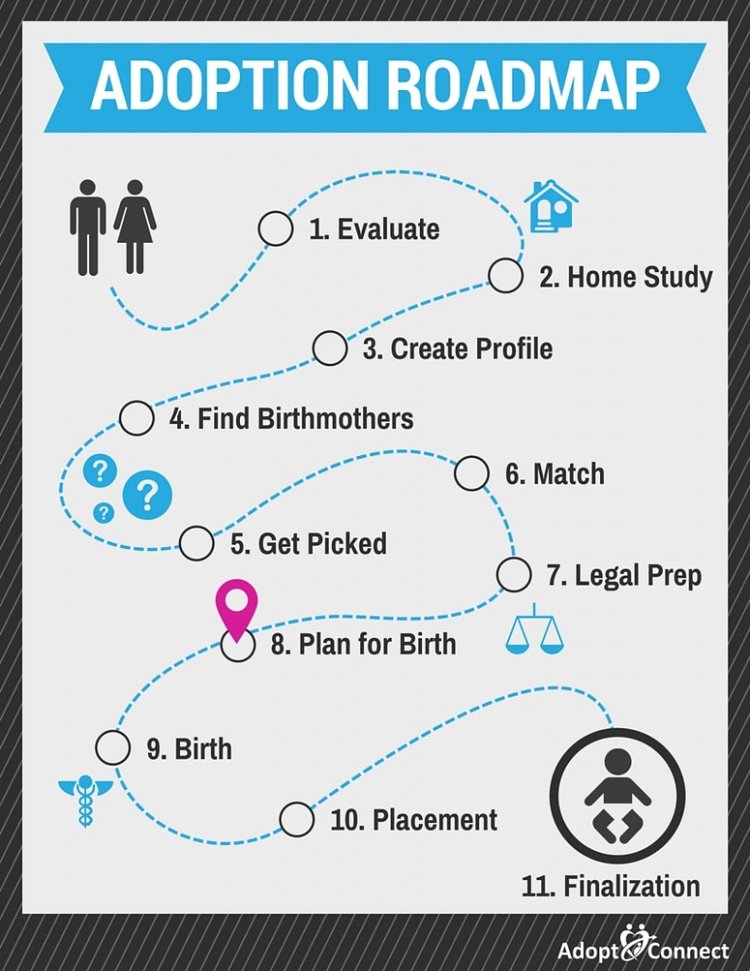
Make what arrangements you can ahead of time and know which ones you’ll have to make on the fly.
If you are a resident of a state different than the one in which the child is to be born, special procedures need to be followed before you can leave the state where the child is born. Ask your attorney how long you should plan on staying in state before returning home. (A good rule of thumb is 10 days.)
Keep in mind that you don’t have to stay in the same city, just the same state, so if you have friends or family in state who are is willing to put you up, you can save yourself the cost of a hotel.
You should also contact the hospital where the baby will be born and ask about arrangements for adoptive parents. Many hospitals will provide a place for you to stay while waiting for the baby to be discharged.
Also, be sure to give your employer a ‘heads up’ about your adoption plan so you don’t get fired when you have to take two weeks off on with no notice.
If you have young children you’ll also need to make arrangements for them, too, either to come with you or to have someone take care of them while you are gone.
Pretty much everything that happens at the hospital will be dictated by the birthmother’s wishes, so you should find out what those wishes are ahead of time.
Some birthmothers are okay with (or even prefer) your being present in the waiting room while she’s in labor.
Some are even okay with adoptive parents being in the delivery room!
Sometimes the birthmother’s wishes may be hard for you to bear, though.
She may want friends or family who oppose her adoption plan to be present and their words or actions toward you may make you feel uncomfortable or upset.
It’s important to remain pleasant and supportive of the birthmother.
If you can’t handle a particular guest, it may be best to excuse yourself politely for a few minutes.
It’s also not uncommon for birthmothers to want to spend some time alone with their child before relinquishing. This might be a few minutes up to 24 hours.
Here are a few other things to talk about:
The baby’s name – When a child is adopted, his or her surname is almost always changed to the adoptive family’s. Changing first names can be contentious, though. Some birthmoms are happy to go along with whatever given name the adoptive family wants. Others may have their hearts set on giving their child a particular name, even if they know it will probably be changed later.
Who cuts the cord – If one or both of you will be in the room, then you might ask to cut the umbilical cord.
Hep B Vaccine and Vitamin K – The first dose of the Hepatitis B vaccine and shot of Vitamin K are routinely given within the first few hours of birth. Many people have strong feelings for or against this.
Circumcision – Like vaccines, the circumcision of newborn boys (often done a day or so after birth) can be divisive.
Firsts – Who will be the first to hold the baby? Who gives the first bath or changes the first diaper?
Keep in mind that until the birthmother has relinquished her child and you are given guardianship, she has the legal right to determine what happens with the baby. Many birthmothers try to respect the wishes of the adoptive parents, but if she feels strongly about a particular issue she may choose to do otherwise.
It’s best to discuss these kinds of wishes openly with the birthmother ahead of time so everyone knows what to expect and can prepare themselves emotionally. This also lets you know the issues where you should be extra considerate of the birthmother’s feelings.
Happy birthday, baby!
You know all those plans you made?
Get ready for them to change.
Well, probably not ALL of them, but don’t surprised if SOME plans need to change.
No woman can be expected to give birth and relinquish her newborn for adoption without getting at least a little bit emotional.
Preferences she had before may change.
It’s not possible to fully anticipate what that experience will be like, so there are probably to be some things in your hospital plan that will need to accommodate the unexpected.
Being flexible is key to making your hospital experience go as well as possible.
Keep in mind that you’ll be experiencing some pretty strong emotions, too! What’s important to you may change.
As with any birth, there’s a mix of fear and excitement, anxiety and anticipation.
Will everything go well?
Will the baby be okay?
For adoptive parents there’s another question looming: Will she change her mind?
The fact is that, at this point, there’s very little that you can do to directly influence how things go.
What you should do is be supportive of the birthmother and hope for the best.
Also, remember to take care of yourself: take breaks, get some rest, and don’t go too long without eating.
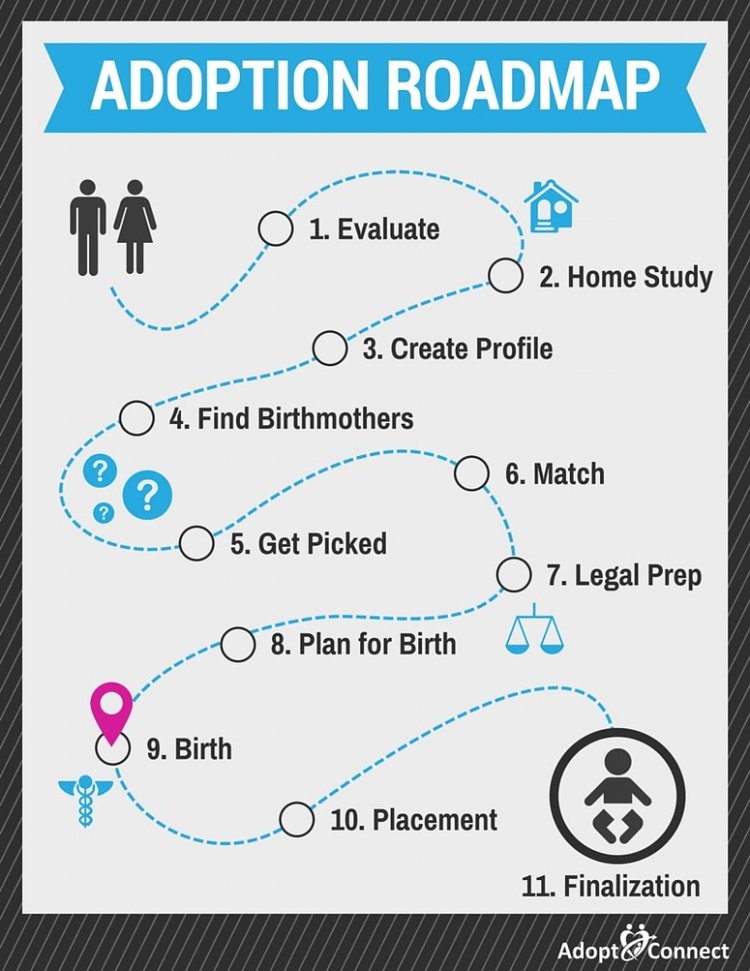
When it comes to relinquishment, placement, and finalization, I once again have to bring out the “I’m not a lawyer” language.
The fact is that every situation is unique. Depending on the states and the individuals involved, how the process goes can vary quite a bit.
To be blunt, no blog post or article can address adequately what may or may not need to happen.
So, instead of risking giving you potentially very inaccurate advice, for this and the next step I’m going to give you some general info and encourage you to ask the professionals working with your adoption about the specifics.
While some states allow for a birthfather to consent to an adoption prior to the adoptee’s birth, no state accepts a birthmother’s consent until after birth. (Alabama and Hawaii allow a birthmother to consent prior to birth, but require that she reaffirm that consent after the baby is born.)
The way that a birthmother consents to an adoption depends on the state where she and the child reside. It may merely be signing some papers in front of a notary public or it may require her to appear in front of a judge.
Many states require that a birthmother wait a certain number of hours after her child is born before allowing her to legally consent to an adoption. This is to make sure that she is certain that placing her baby for adoption is what she wants to do and that that decision isn’t overly influenced by the ordeal of labor and delivery.
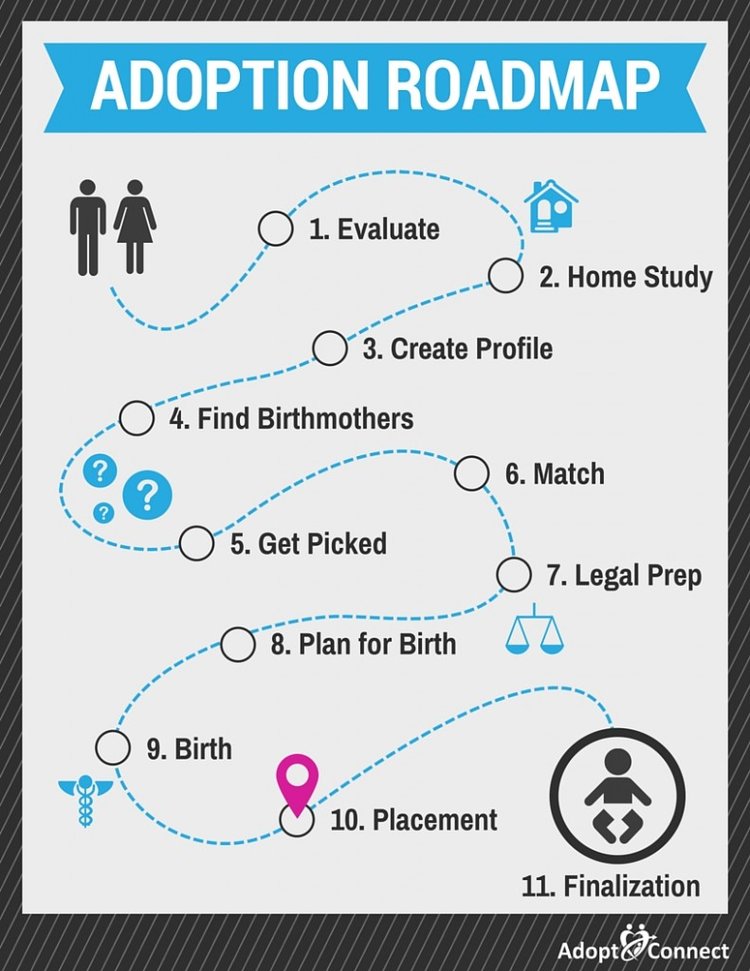
Most states give birthmothers a period of time after formally consenting after giving birth to an adoption to change her mind and withdraw her consent. Until that time has elapsed, the adoption cannot be finalized.
[https://www.childwelfare.gov/glossary/glossaryl/]
Because most states have a revocation period where a birthmother can withdraw her consent to an adoption, any placement during that period is considered “legally risky.”
It’s considered risky because even though you may have taken custody of the child, there’s a chance that you will have to give the baby back if the birthmother changes her mind.
When your child is placed with you, ASK YOUR LAWYER whether you are in a period of legal risk and, if so, how long it will last.
Congratulations! With the finalization of your child’s adoption, you are legally his or her parent.
You now have all the same rights and responsibilities as any other parent does.
So go out and celebrate with your loved ones the newest addition to your family or, better yet, stay in and bond with your beautiful bundle of joy.
Many adoptive parents still have lingering fears that the birth family will try to “take back” their child.
Since adoption is meant to be permanent, it is very, very rare that an adoption would be challenged after finalization.
Pretty much the only circumstance where that could happen is when there is a problem with the consent from the birthparents: for example if they were coerced or (in the case of birthfathers) if consent was never gotten in the first place.
This is why it’s so important to work with qualified adoption professionals. (Doubly true when it comes to attorneys! You wouldn’t hire a patent attorney to represent you in a criminal trial, so don’t hire one to process your child’s adoption.)
Again, there being any problems with an adoption after the court issues a final decree of adoption, is incredibly unlikely and shouldn’t be any concern to adoptive parents who have worked with experienced adoption professionals.
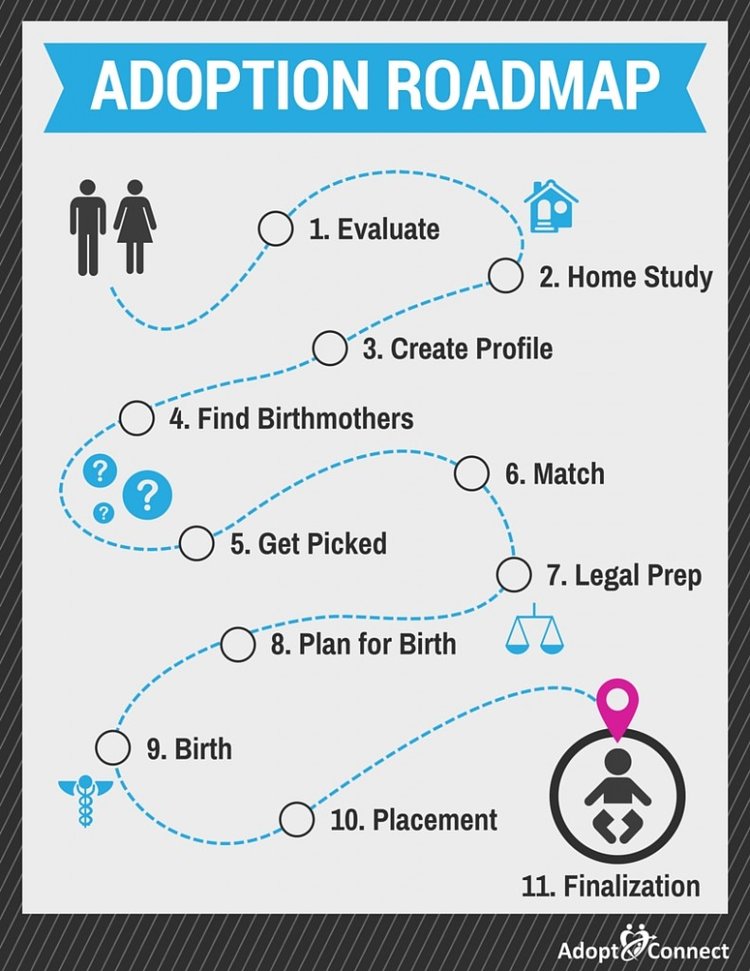
For some reason, a lot of the general public has the impression that adopting is the easy way to get a baby.
Of course, no one who is even remotely familiar with the adoption process would ever dare to call it “easy.”
(I’d also add that “get a baby” is a really negative way of talking about adoption. Children aren’t accessories or pieces of furniture. Children are welcomed into a family.)
While it is no doubt difficult, adopting a child is one of the greatest, most rewarding things a person can ever do in their life.
Now that you have a short decently long sketch of the private domestic newborn adoption process, you can better understand what next steps you need to take to move forward.
And if you feel like you are stuck or aren’t making any progress, we’d love to help you out: